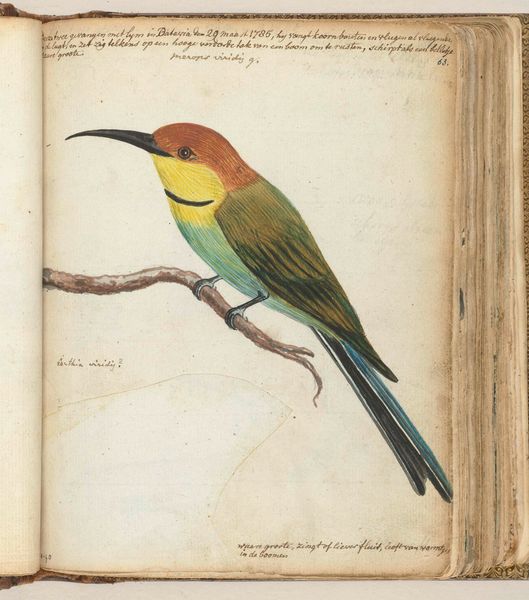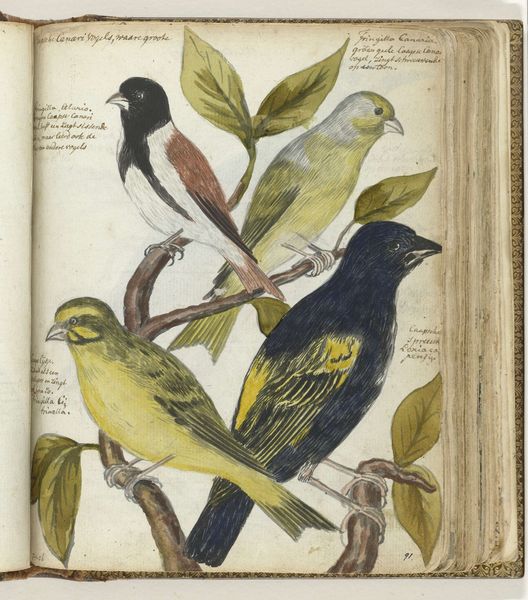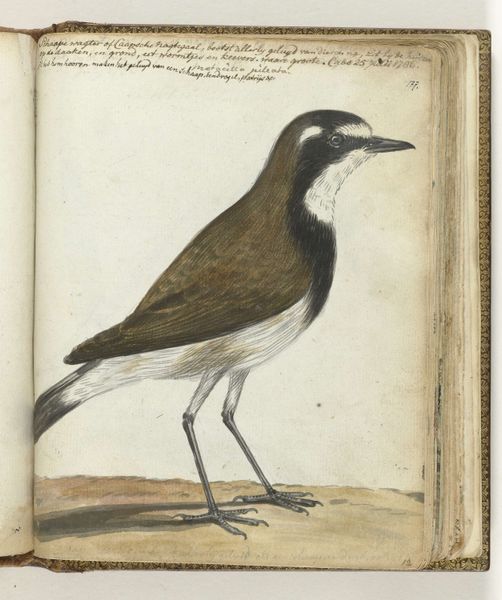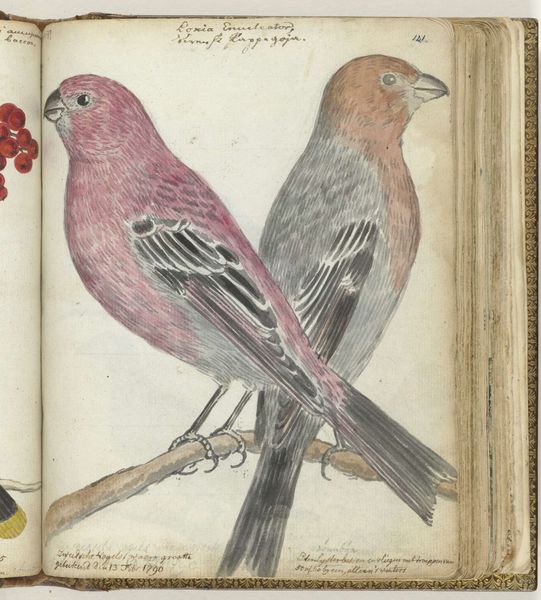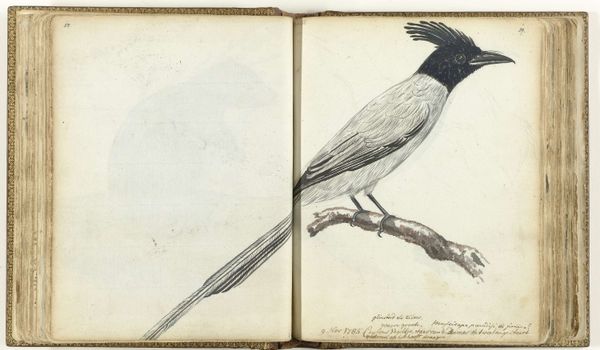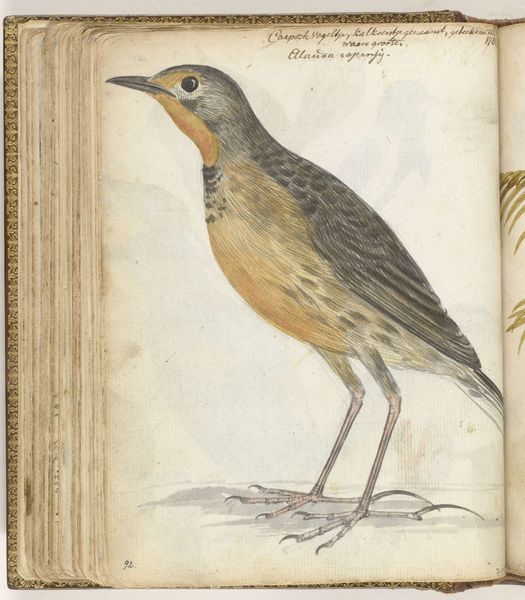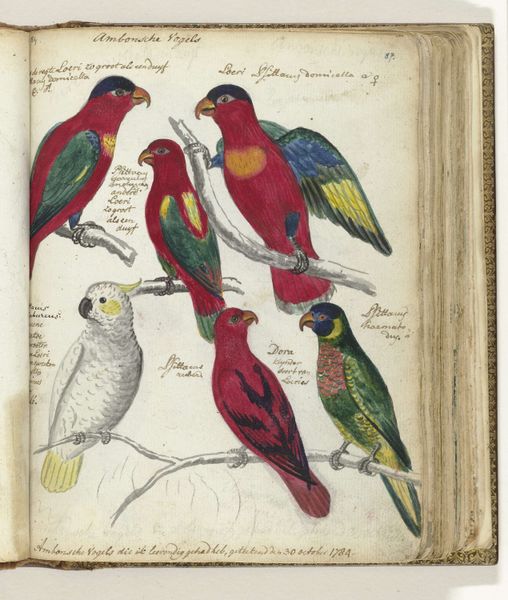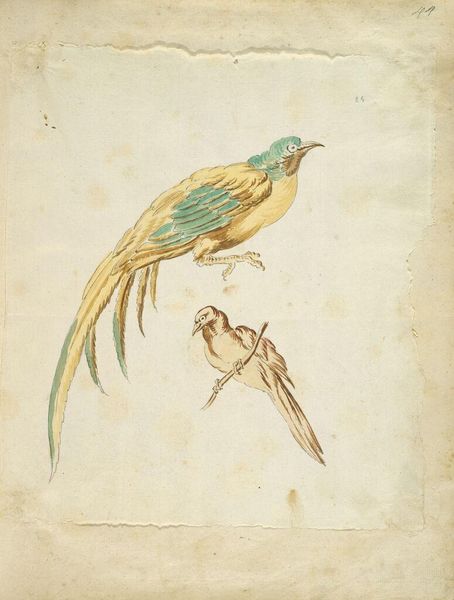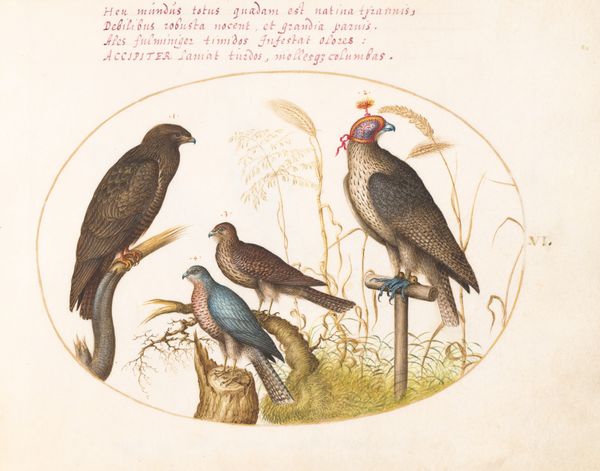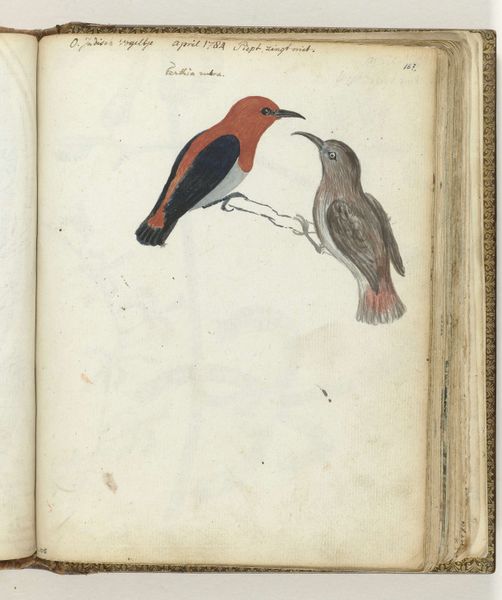
drawing, coloured-pencil, watercolor
#
portrait
#
drawing
#
coloured-pencil
#
watercolor
#
coloured pencil
#
watercolour illustration
#
botanical art
#
watercolor
Dimensions: height 155 mm, width 195 mm
Copyright: Rijks Museum: Open Domain
Curator: This drawing, tentatively dated to 1785, captures a "Bird of Paradise" through the eyes of Jan Brandes. Rendered with colored pencil and watercolor, it’s a striking portrait nestled within the pages of what seems to be a field journal. Editor: My immediate sense is one of fragility. The delicate lines, the muted colors, the visible notes around the illustration… it all speaks to the preciousness of both the bird itself and the act of documenting it. Curator: Brandes appears to be meticulously dissecting the bird’s essence. We see careful annotations accompanying the visual depiction. What do you make of the symbolic weight it carries, beyond a mere ornithological study? Editor: Bird of Paradise, isn’t that such a loaded term already? For centuries, these birds have signified unattainable beauty, paradise lost or found, exotic allure. Here, it's almost as though Brandes is trying to capture that essence, pin down something otherworldly to the here and now through observation. The open journal suggests to me an attempt to bridge worlds. Curator: I agree. It’s fascinating how Brandes, by incorporating textual observations with the illustration, attempts to make the bird known through both empirical and subjective means. The text hints at local terminology of a very foreign land: “2 Voet Lang," he writes about its tail. These combined mediums become something larger. Editor: Yes, a very physical encounter with the unknown and the beginning of how we catalog and, frankly, consume that which fascinates us from a distance. What I wonder is how the cultural perception of birds of paradise has shifted since Brandes' time. How much has colonialism and commerce changed the symbolism that informs art? Curator: An insightful thought. Today we have the benefit of conservation awareness; perhaps back then the act of scientific documentation held different colonial connotations. Brandes’ "Bird of Paradise" exists as a product of its time while also representing a continuous human desire to categorize and immortalize beauty. Editor: Indeed. An intriguing nexus of art, science, and cultural history encapsulated within this fragile image. A frozen moment from 1785 revealing evolving perceptions.
Comments
No comments
Be the first to comment and join the conversation on the ultimate creative platform.
